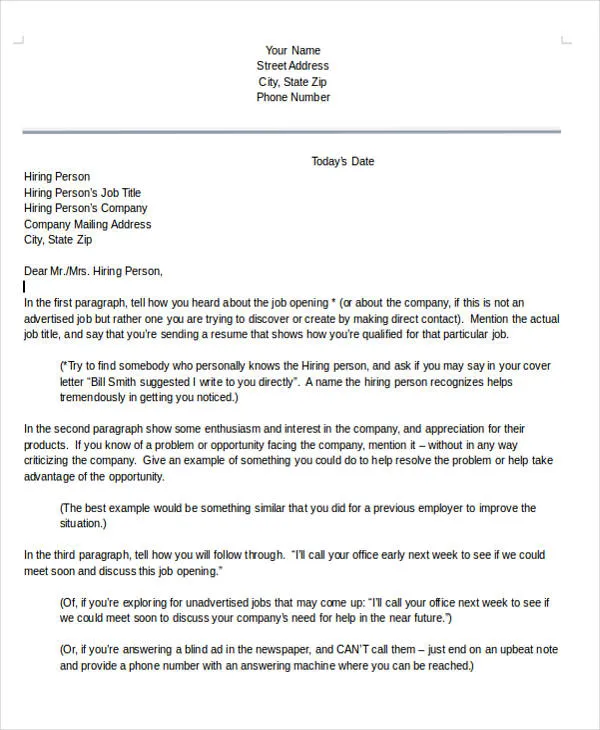What is a Software Intern Cover Letter
A software intern cover letter is a crucial document that accompanies your resume when applying for software engineering internships. It serves as your introduction to the hiring manager, providing a platform to showcase your skills, experience, and enthusiasm for the position. Unlike your resume, which is a concise summary of your qualifications, a cover letter allows you to elaborate on your achievements, explain your career goals, and demonstrate how your skills align with the specific requirements of the internship. Crafting a compelling cover letter is essential for making a strong first impression and increasing your chances of securing an interview.
Purpose of a Software Intern Cover Letter
The primary purpose of a software intern cover letter is to persuade the hiring manager that you are the ideal candidate for the internship. It goes beyond simply listing your qualifications; it’s about telling a story that highlights your passion for software development and your potential to contribute to the company. A well-written cover letter should grab the reader’s attention, clearly articulate your motivations, and demonstrate your understanding of the role and the company’s values. It should also provide context for your resume, explaining how your skills and experiences are relevant to the specific internship opportunity.
Key Components of a Cover Letter
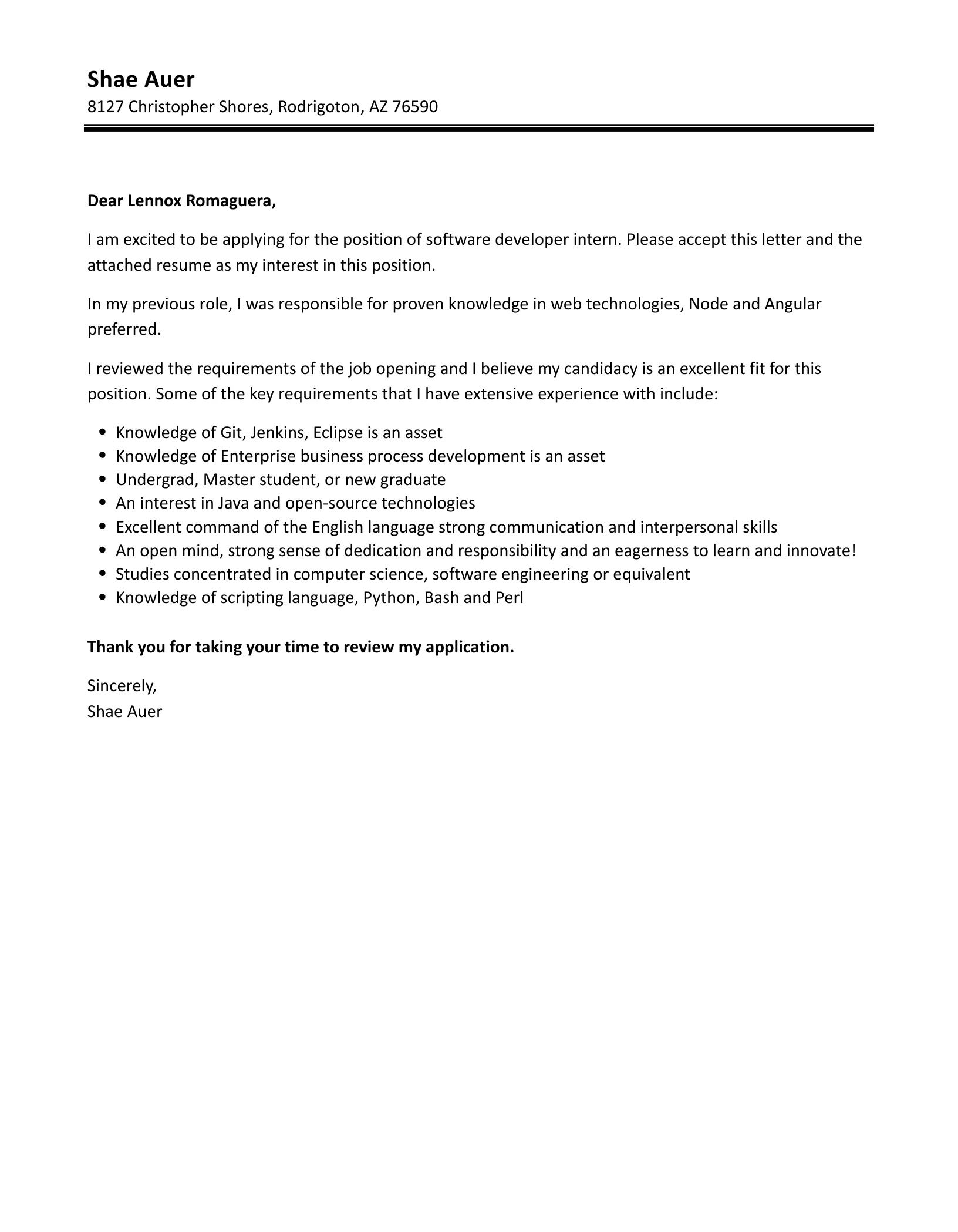
Header of the Cover Letter
Contact Information
Your contact information should be at the top of your cover letter. Include your full name, phone number, email address, and optionally, your LinkedIn profile URL or personal website. Ensure your email address is professional and easy to read. This section ensures the hiring manager can easily reach you.
Date
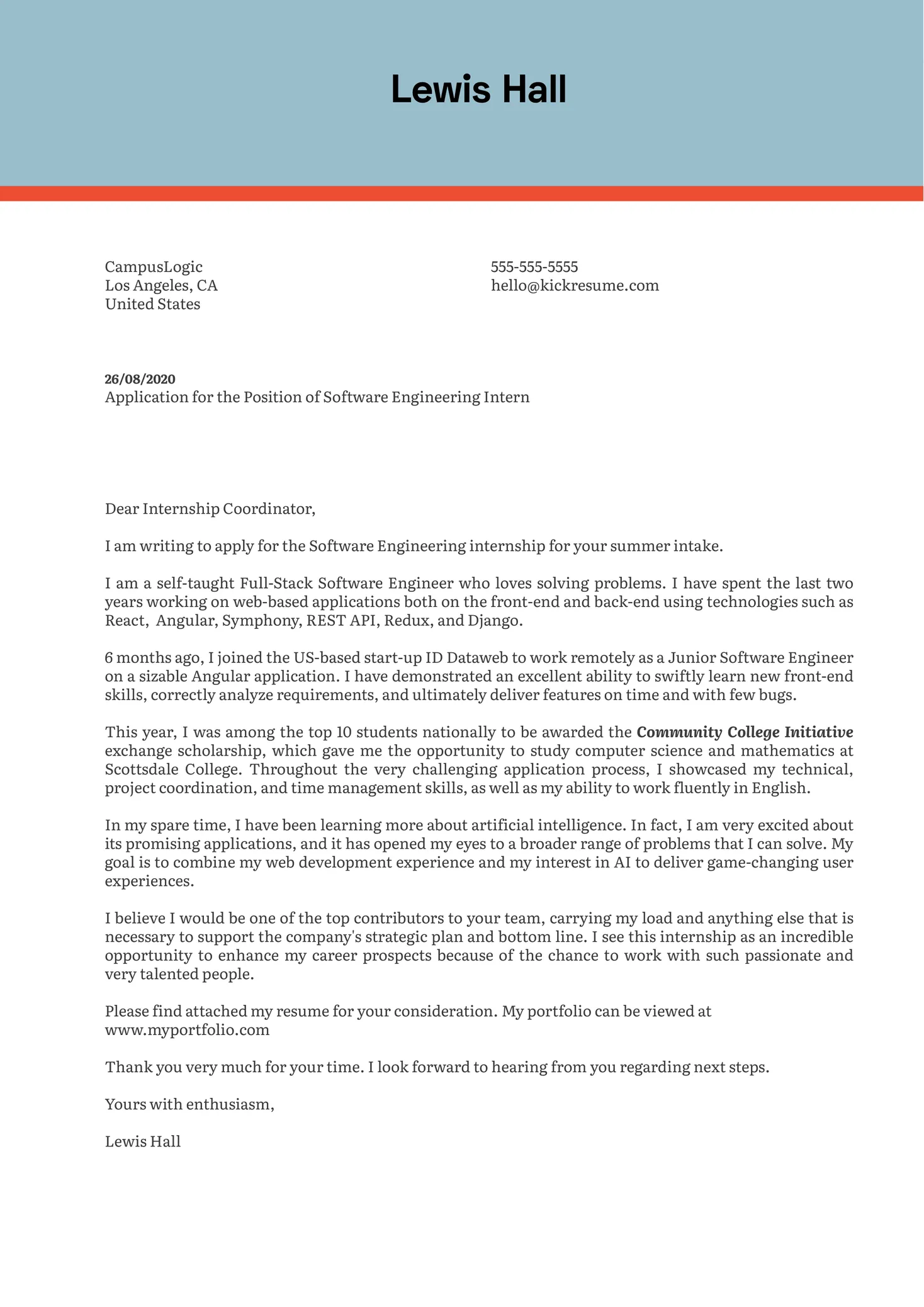
The date should be the current date when you are submitting your application. Place this date directly below your contact information, typically on the left side of the page.
Recipient Information
Address your cover letter to the hiring manager or the specific person mentioned in the job posting. If the name is not provided, try to find it through LinkedIn or the company website. Use a formal salutation like “Dear Mr. / Ms. [Last Name].” If you cannot find a specific name, use a general greeting such as “Dear Hiring Manager” or “Dear [Company Name] Recruiting Team.”
Body of the Cover Letter
Opening Paragraph
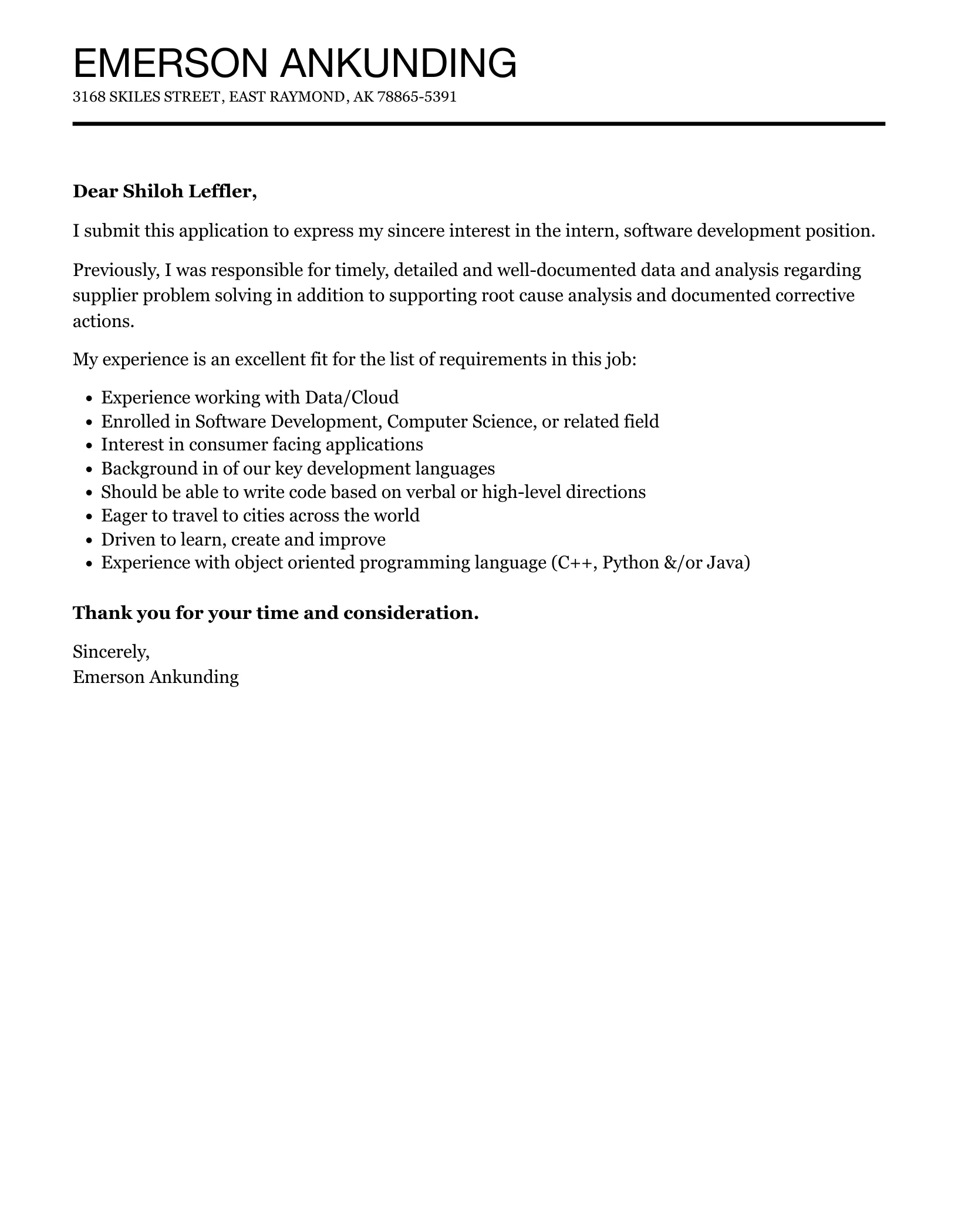
Start with a strong opening that grabs the reader’s attention. Clearly state the position you are applying for (Software Intern) and how you found the opportunity. Briefly mention what excites you about the company or the specific role. Show your enthusiasm from the beginning.
Highlight Your Skills
Identify the key skills and technologies mentioned in the job description. Use these to showcase your expertise. Provide specific examples of projects or coursework where you utilized these skills. Quantify your achievements whenever possible. For example, instead of saying ‘I am proficient in Python,’ you might say, ‘Developed a Python-based web scraper that increased data collection efficiency by 30%.’ Show, don’t just tell, your skills.
Showcase Relevant Experience
Even as an intern, you likely have relevant experience. This could include personal projects, academic projects, volunteer work, or previous internships. Describe your responsibilities and the outcomes of your work. Focus on what you learned and how you contributed. Use action verbs and quantify your results whenever possible. Demonstrate a clear link between your experience and the internship requirements.
Express Enthusiasm
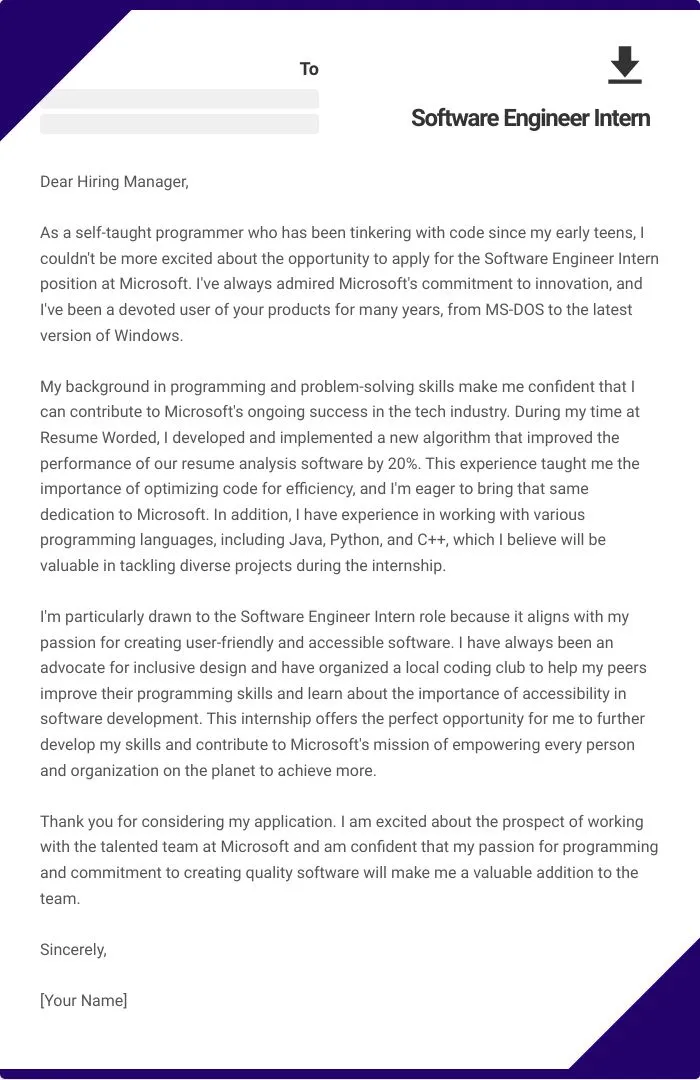
Show your genuine interest in the company and the internship role. Research the company’s mission, values, and recent projects. Explain why you are drawn to this specific company and what you hope to achieve during your internship. Tailor your cover letter to show that you have carefully considered the opportunity and are not just sending a generic application.
Closing Paragraph
Reiterate your interest in the internship and express your gratitude for their time and consideration. Summarize your key qualifications and reiterate your enthusiasm for the opportunity. Keep it concise and professional.
Call to Action
Include a call to action, such as requesting an interview. Express your availability and willingness to discuss your qualifications further. Thank the hiring manager again for their time and consideration. End with a professional closing, such as “Sincerely” or “Best regards,” followed by your name.
Formatting and Design
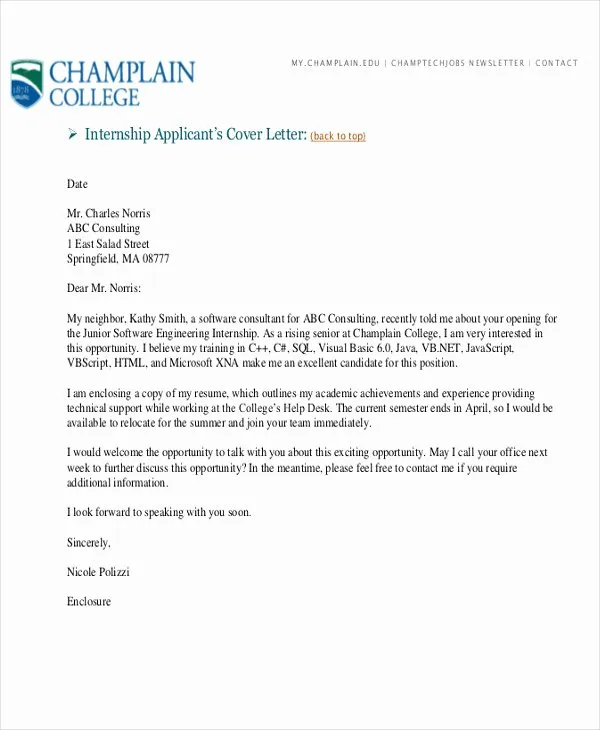
Font Selection
Choose a professional and readable font, such as Times New Roman, Arial, or Calibri. Use a font size between 10 and 12 points. Ensure your font is consistent throughout the cover letter. Avoid using overly decorative fonts that might distract the reader. Legibility is key.
Margins and Spacing
Use standard margins (1 inch on all sides) and single- or 1.15-line spacing. This ensures the cover letter is easy to read and visually appealing. Maintain consistent spacing throughout the document, including between paragraphs. A well-formatted cover letter demonstrates professionalism and attention to detail.
Proofreading and Editing
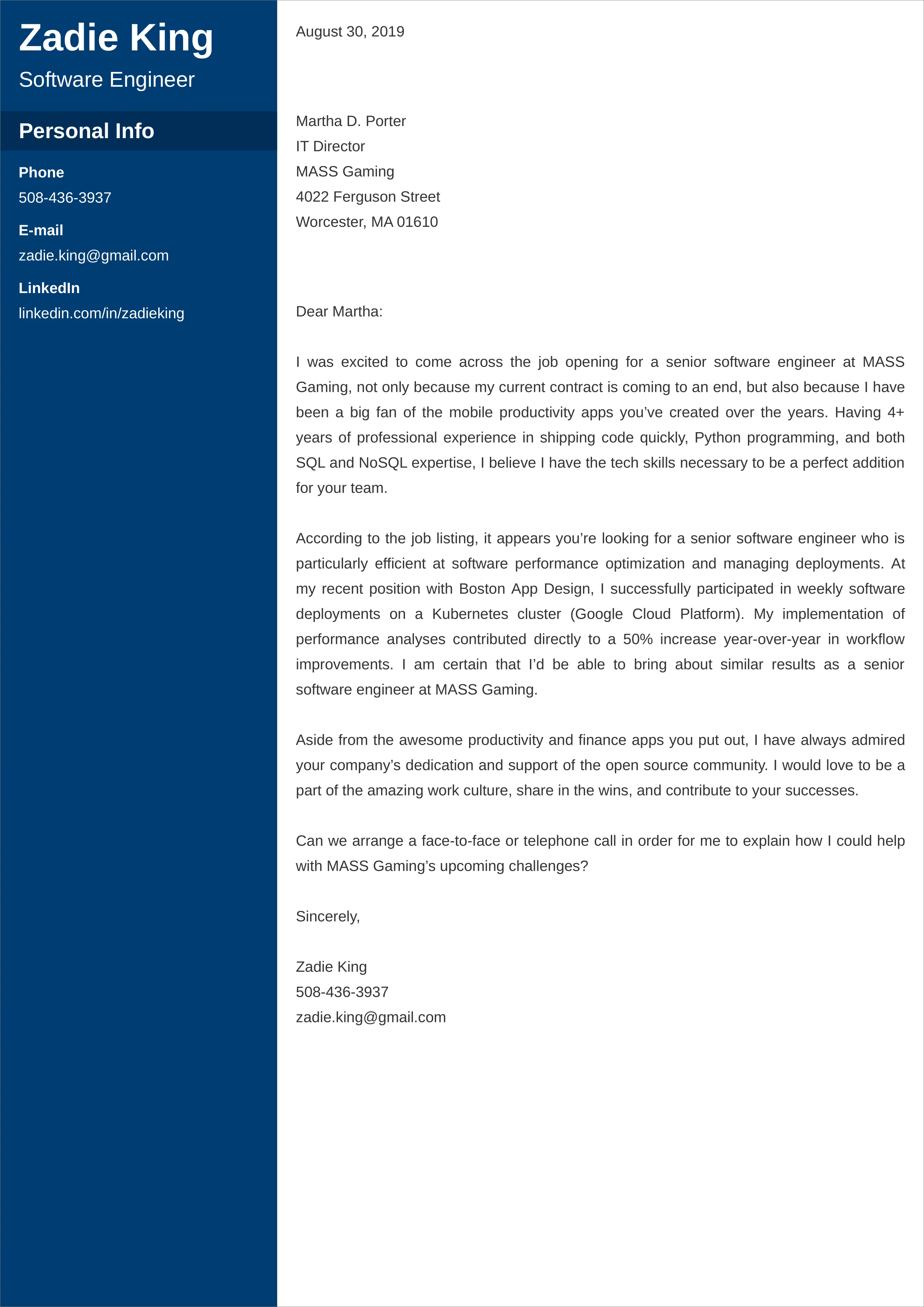
Proofreading is essential. Carefully review your cover letter for any typos, grammatical errors, or punctuation mistakes. Read the cover letter aloud to catch any awkward phrasing. Ask a friend, family member, or career counselor to review your cover letter for feedback. A polished cover letter shows that you are detail-oriented and care about making a positive impression.
Common Mistakes to Avoid
Generic Cover Letters
Avoid using a generic cover letter that is sent to multiple companies. Customize each cover letter to the specific job and company. Research the company and tailor your cover letter to address their needs and values. Showing that you have done your research and are genuinely interested in the role significantly increases your chances of getting noticed.
Typos and Grammatical Errors
Typos and grammatical errors can undermine your credibility. Always proofread your cover letter carefully. Use a grammar checker, but also read through the document yourself to catch any errors. A polished cover letter demonstrates professionalism and attention to detail.
Ignoring the Job Description
Carefully read the job description and highlight the key skills and requirements. Make sure your cover letter directly addresses these requirements. Show how your skills and experience align with the company’s needs. Failing to address the job description shows that you are not interested in the position.
Software Intern Cover Letter Examples
Reviewing software intern cover letter examples can provide helpful guidance. Search online for examples that align with your field of study or the specific type of internship you are seeking. Analyze the examples for structure, tone, and content. Remember to customize the examples to reflect your unique skills and experience. Use these examples as a starting point, not as a template to be copied exactly.
In conclusion, a well-crafted software intern cover letter is a critical tool in your job application process. By following these guidelines, you can create a compelling cover letter that showcases your skills, experience, and enthusiasm, increasing your chances of landing your dream software engineering internship. Good luck with your applications!
